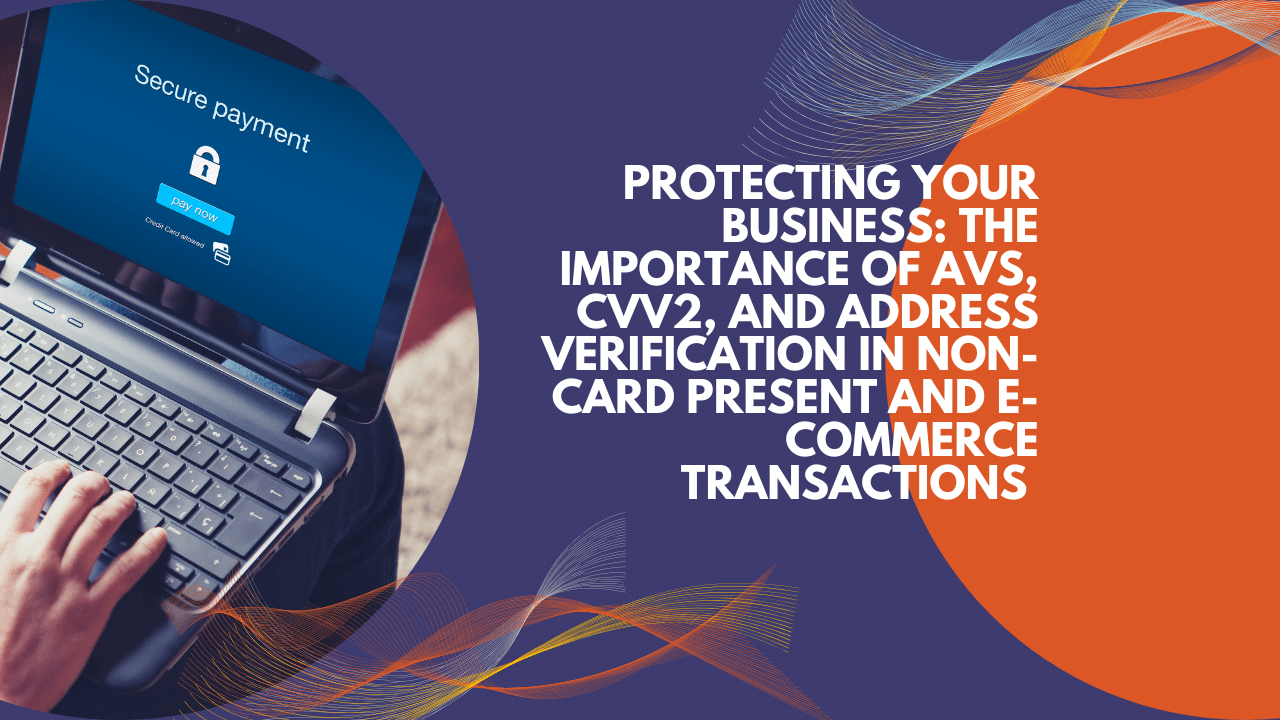Protecting Your Business: The Importance of AVS, CVV2, and Address Verification in Non-Card Present and E-Commerce Transactions

In the dynamic landscape of modern business, where online transactions and e-commerce have become the norm, ensuring the security of financial transactions has become a paramount concern for businesses. This is especially crucial for those with merchant accounts engaging in non-card present and e-commerce transactions. The Address Verification System (AVS) and Card Verification Value 2 (CVV2) are two critical tools that play a significant role in safeguarding these transactions. This blog post will explore why these tools are indispensable for your business and explore best practices to avoid potential pitfalls.
1. Securing Transactions with AVS and CVV2
AVS and CVV2 are security measures that provide an added layer of protection against fraudulent transactions. AVS cross-references the numerical portion of the customer’s billing address with the information stored by the credit card issuer. Suppose the address provided during the transaction does not match the billing address on file. In that case, it can trigger a red flag for potential fraud. Similarly, CVV2 is the three-digit code found on the back of a credit card. It adds an extra layer of verification as it’s not stored on the magnetic stripe or embossed on the card. Requiring customers to provide this code during transactions helps ensure the card is in the physical possession of the customer.
2. The Power of the Full Match: Address, Zip, and CVV2
A “full match” scenario occurs when the provided address, zip code, and CVV2 code all align with the information held by the credit card issuer. This alignment significantly reduces the chances of fraud. A mismatch, however, could indicate a stolen card or a fraudulent transaction attempt. Businesses can substantially mitigate risks associated with chargebacks and unauthorized transactions by requiring a full match.
3. Shipping Address Verification
In e-commerce, shipping goods to the correct address is crucial. Shipping to the billing address associated with the credit card adds another layer of validation, as it’s likely the legitimate cardholder’s address. Fraudsters often prefer to ship goods to alternate locations, such as mailbox stores or virtual offices, to avoid detection. Businesses can significantly reduce the likelihood of fraudulent activities by ensuring that the shipping address matches the billing address or a legitimate location.
4. Vigilance Against Unusually Large Orders
While a sudden spike in orders might seem like a positive sign of business growth, it could also indicate fraudulent activities. Fraudsters often attempt to make large purchases in an effort to maximize their gains before the fraud is detected. Implementing mechanisms to scrutinize orders that deviate significantly from the norm can help prevent such incidents.
5. The Devastating Impact of Chargebacks
A chargeback occurs when a cardholder disputes a transaction and asks the card issuer for a refund. Chargebacks can be a severe blow to businesses, resulting in financial losses and goods forfeiture. By adhering to robust security practices such as AVS, CVV2, and careful order assessment, companies can minimize their vulnerability to chargebacks.
In conclusion, the digital age has ushered in unprecedented convenience but has also given rise to new forms of fraud. Businesses engaged in non-card present and e-commerce transactions must proactively protect themselves and their customers. Utilizing tools like AVS and CVV2, emphasizing the importance of full matches, verifying shipping addresses, and exercising caution with huge orders are crucial to safeguard against fraudulent activities and chargebacks. By prioritizing these measures, businesses can thrive in the digital marketplace with confidence and security.








